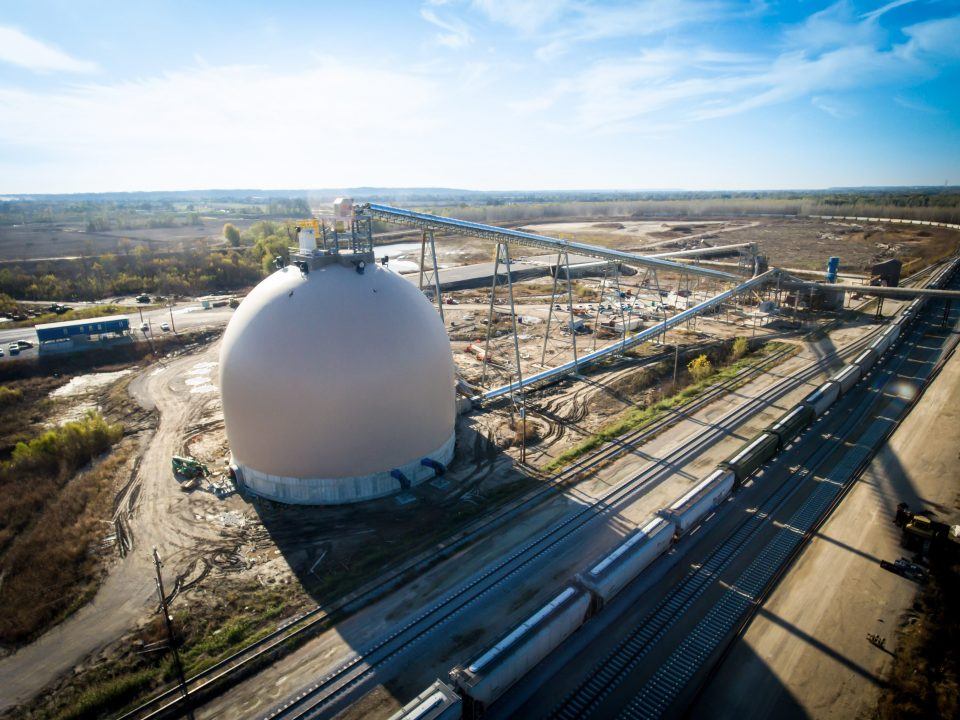Grain companies looking to increase storage at existing sites can maximize their investment by selecting a DomeSilo™ from Dome Technology. By building a new structure on an existing footprint, companies gain greater storage capacity as the dome is built upward, not outward, requiring no additional land.
Dome Technology pioneered the reinforced-concrete dome concept 40 years ago. A DomeSilo is essentially a cylinder-shaped reinforced-concrete structure with a dome-shaped roof. Based on innovative construction methods, no seams are present.
These domes are designed to store more product in a smaller footprint, even when compared to silos. A silo’s traditional conical roof cannot support product, so the entire interior cannot be used for storage. Because the hemispherical geometry of a dome renders strength at all points of the structure, the entire interior can be used to contain product. In addition, the curved design can double or triple the capacity of any existing circle ground pile with the same footprint or be designed with tall sidewalls to replace or add bin space to an upright facility.
“The DomeSilo is a reinforced-concrete structure that provides great grain protection. Domes provide ideal conditions for grain, safeguarding against insects, birds, pests, and weather to ensure top-level food-grade storage,” Dome Technology Vice President of Marketing Jason Miller said.

Ideal grain-storage conditions
Since wheat, corn, canola, soybeans, and the like are sensitive to moisture and temperature changes, an airtight structure that wards off water and controls the interior environment is the best way to ensure quality control. That level of protection is made possible by the seamless or monolithic dome shell.
A dome staves off boundary issues other structures face thanks to its construction materials. First, the airform covering the entire dome prevents water and moisture from seeping in. Secondly, the combination of waterproof membrane, reinforced concrete shell, and continuous layer of polyurethane foam prevents extreme interior temperature fluctuation; these features reduce heating and cooling of the walls and air inside, preventing condensation.
To complement the protection provided by the shell, grain domes are commonly equipped with monitors and sensors for detecting temperature changes and the presence of carbon dioxide. Blowers near the apex and at the ground level provide aeration for optimal storage conditions.
Editor’s note: The preceding is an excerpt from an article published in the February 2018 issue of Dry Cargo International. For more information, including details on reclaim systems, high throughput, and cost-effective construction, visit Dry Cargo International and click on the February 2018 issue.